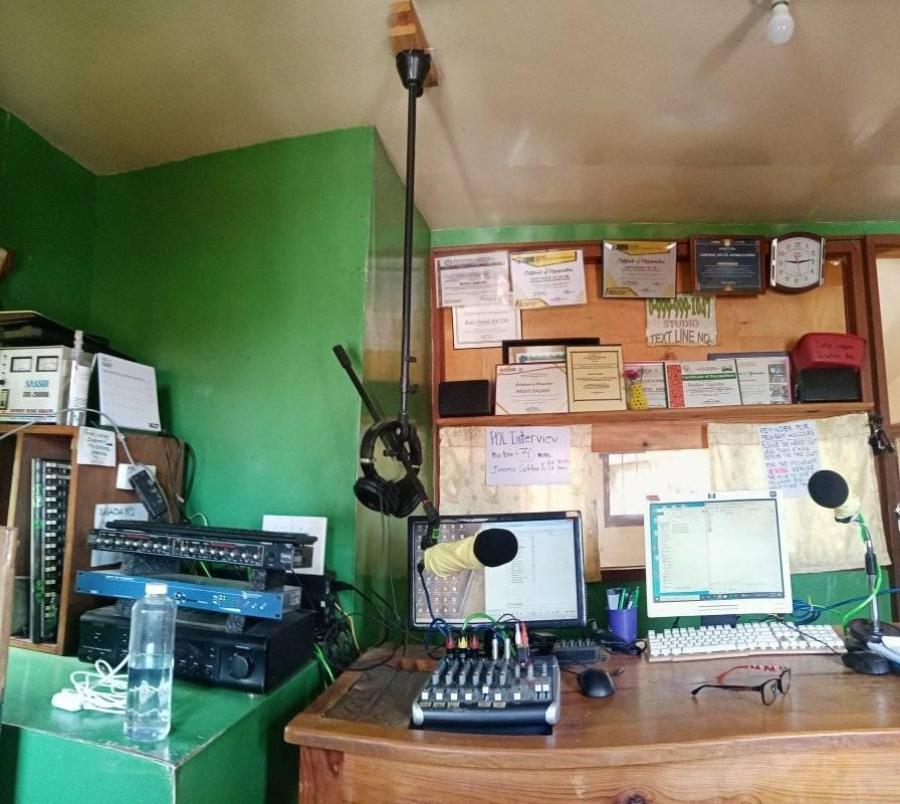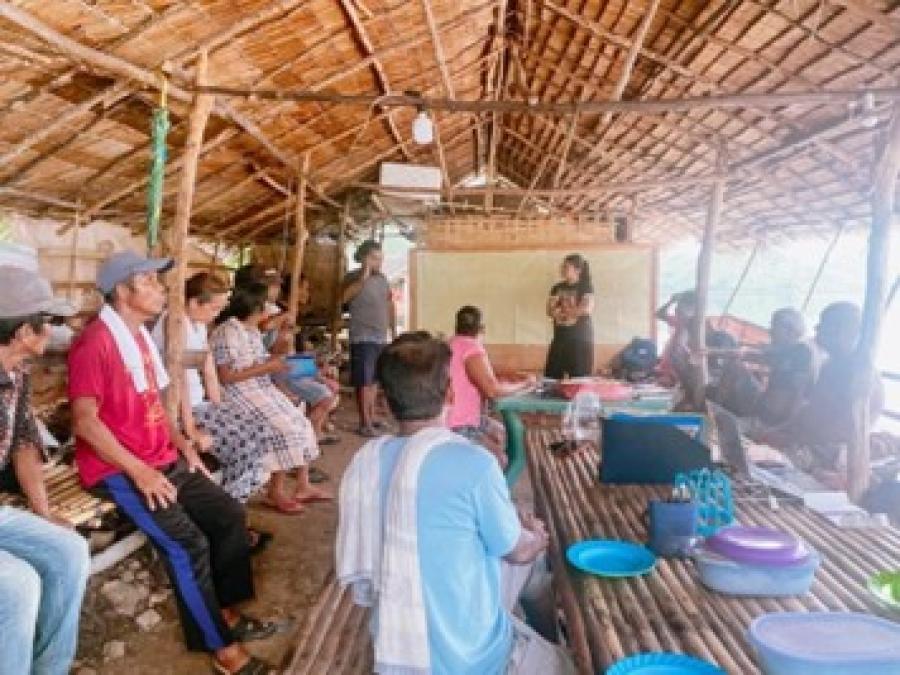Moslem ethnic groups in the southern Philippines have been pushing for regional political autonomy since World War II. This struggle, which at times has included open warfare, has caused considerable displacement.
Since the 1972 declaration of martial law in the Philippines, the various Moslem ethnic groups in the southern Philippines have waged an ongoing armed struggle against the central government. Although the goals and the intensity of the fighting of this movement vary by region, ethnic group and faction, Filipino Moslems are united in their desire for political recognition of ethnic regionalism and an acute consciousness of being a minority in a largely Christian nation.
Although Moslems represent less than six percent of the Philippine population, they are heavily concentrated in many parts of Mindanao. In Sulu they are the overwhelming majority, consisting of two major ethnic groups: the Tausug and the Samal.
The Sulu Archipelago is a chain of islands stretching from southwestern Mindanao to northeastern Borneo. There are two major ecological zones, which very roughly correspond to ethnic divisions. The coral islands - both large and small - are oriented to the sea and fishing, with only marginal horticulture. The larger volcanic islands have fertile soils suitable for intensive dry rice cultivation with fishing along the coasts. With the exception of interior Basilan, the larger islands are populated by Tausug speakers, the dominant group in the old Sultanate of Jolo, an important 19th century trading state. The coral islands are populated by Samalan speakers, historically subject to the suzerainty of the sultanate.
Although Islam arrived in the Philippines as much as two centuries before the Spanish colonial empire, Islam was strongly influenced by almost constant warfare between the cross and the crescent. Spanish attitudes, hardened by their fight against the "Moros" - the Islamic conquerors of the Iberian peninsula - gave all subsequent relations with "Moros" in the Philippines an intensely religious cast which persists today.
Of course, the Spanish were eventually able to achieve a modest influence, particularly with the establishment of the garrison at Jolo in the 1870s, which exercised little control outside the walled town. The United States Army, in a series of operations lasting until 1913, acquired a certain amount of control in the interior, both because American motives were not perceived to be religious, and because Tausug were unable to obtain modern weapons in any quantity. By calling in out-of-date firearms, the Americans were able to achieve a certain fragile peace.
World War II drastically altered this situation. Japanese administration did not penetrate the interior of the large islands, which reverted to traditional patterns of leadership and political authority. The end of the war left Jolo Island a virtual arsenal of modern weapons. Since 1946, Manila has attempted unsuccessfully to collect so-called "loose" firearms. Private warfare and internecine feuding again became - as it was in the 19th century - endemic on Jolo. The Phillipine state, represented mainly by the Constabulary and the court system, was unwittingly drawn into playing the private warfare game largely on rules made by the Tausug. In reality, the Constabulary became merely one faction among many in the political and military landscape of the island. Not being able to assert its role as a neutral representative of the nation, it merely contributed to the local factional chaos. Further, the Constabulary was involved, through both policy and bribery, in the supply of ammunition and weapons to the Tausug.
The declaration of martial law in 1972, by increasing the power of the military and its independence from local political influence, profoundly changed the delicate balance of interests in Jolo. Prior to martial law a kind of working misunderstanding prevailed between the enforcement of national law and the Islamic and customary law of the interior. Tausug elected officials, operating partially in the Philippine system and partially according the Tausug norms, served as power brokers and informal mediators to mute the influence of the military. The government, through the Constabulary and a skeletal administrative apparatus, appeared sovereign, but its influence did not penetrate very deeply into the interior. Overzealous commanders who did not play the game according to local rules were quickly transferred.
Further, since the conflict was defined as a "law and order" problem and military operations were, in theory, only conducted against individual "outlaws," there were moral and legal limits to the hardware and tactics which could be employed. Use of air power, napalm, bombs, search and destroy missions directed against civilian support, and even the use of machine guns and mortars, were not politically feasible, even if available. The limited domestic functions of the Constabulary were, in theory, separate from the broader war-like powers of the regular armed forces. All of this changed with martial law: the military found that it no longer - as most commanders on Jolo had always felt - had one hand tied, while the Tausug in turn felt no further need to moderate their power, since ad hoc political solutions to numerous local problems were less likely.
Everyone who has ever fought against the Tausug - Spanish, Americans, Filipinos - has noted their military prowess and intense bravery under fire. The apparent paradox is that the Tausug do not value bellicosity as an end in itself - children, for example, are not encouraged to express conflict directly - but rather view conflict as an inevitable part of the fatefulness of the world - "a man does rightly and leaves the outcome to God." Men do not look for trouble, it is said, but rather "find" it; all violence is seen as counter-violence. Of course, not all men enjoy fighting - some do and some no doubt do not - but for the young fighting is the supreme adventure in a culture which quite radically separates the ethics of the young from the ethics of the old. The young are supposed to be - and most are - hot blooded, violent, adventuresome, and - within the contest of an ideal Islamic morality - "bad," while the old are supposed to be peaceful, religiously inclined, and "good." This is not a conflict of generations caused by rapid change, but a theme of Tausug culture which - judging from epic poetry - was equally prevalent in the past.
The Philippine popular press and government rhetoric attributes the causes of the rebellion to certain familiar troubles: poverty, lack of economic development, religious zealotry, lack of education, land conflict or some combination of all these. Yet as far as the Tausug are concerned, none of these explanations is quite on target.
Poverty is, after all, relative to your point of view, and it is difficult to see how a Tausug farmer engaged in more than adequate subsistence agriculture on land he effectively controls himself, eating a diet fairly rich in protein, can be sensibly compared to a tenant farmer anywhere else in the Philippines, however meager his material possessions may be in other respects.
Economic development is illusory in Sulu. Fishing is the only possibility, and the local market is already operating optimally for local needs, with an adequate and efficient technology suited to the ecology. Commercial fishing for outside markets would require capital inputs (and probable loss of local control) and result in local price increases, exploitative wage labor, harmful ecological effects and a long range drain of surplus value out of the area without an equivalent return. Whatever Sulu needs, it is not maritime plantation agribusiness. There is some need for very modest, decentralized, technological aid to reduce dependence on harmful techniques of fishing by dynamite, but this has never been given serious attention by the government.
Educational development in Sulu since 1946 has probably contributed to the current rebellion, at least in the sense that it has provided a core of leadership which did not exist before. Education, after all, can support the ideology of a modern nation only to the extent that the patriotic values learned in school are at least in some sense relevant to the student's outside experience. This has certainly not been the case in Sulu.
The frantic search for "causes" for the rebellion naively fails to recognize that the modern nation is, after all, an artifact in people's minds. The sensible question is not why men rebel, but why they do not do so. The Tausug have no history of loyalty to the Philippine state, and it is not surprising that given the right historical moment they should take up arms.
Consider the basic facts. Jolo is an island of about one quarter million people who own about 30,000 or so firearms, occupied by a single ethnic group which was at one time an independent state. It has a well developed warrior tradition sustained by an Islamic ethic and a long history of war with the Christian north. The island is remote and quite easy to defend, with difficult terrain and few usable roads. In a pinch it is economically self-sufficient and not easily blockaded. It has minimal economic or financial ties to the rest of the nation. It has an educated (and underemployed) elite which has for the most part not sought fame and glory in the metropolis, but has instead remained wedded to a local base. Finally, it is peripherally located next to a major Moslem nation (Malaysia) which makes offers of assistance fairly easy to implement.
The Philippine government has never made a sincere or serious attempt to develop a genuinely federal system in which the reality of Moslem culture in the south could be preserved through political means, rather than through vigilant Moslem use of force. President Marcos himself candidly expressed this dominant theme at the time of the breakdown of the Tripoli talks in May 1977. Speaking of the proposed (and later somewhat reluctantly implemented) Moslem autonomous region, he said, "This enclave may develop into a completely alien and strange culture which would not be assimilated into the national culture."
The government simply does not take ethnic regionalism seriously, and I have no doubt (if the official pronouncements are to be believed) that the long range implied goal is the elimination of Tausug culture in the name of national integration. A small amount of quaint nostalgia might be tolerated as a sop to the tourist trade: quaint costumes, marriage customs, native dances and the like. And, of course, individual religious freedom would be guaranteed. But religious tolerance which only recognizes individual rights to worship, as distinguished from the rights of the community of the faithful, is totally unacceptable for the Tausug or any Moslem society.
Given the military and geographical realities, and the lack of real strategic interest, it is hard to understand why any government would choose to fight a war with the Tausug, especially since a political solution is clearly feasible. This irrational war is as much a product of the internal politics of the martial law government as it is of any actual realities in Sulu.
In the long run, the Tausug are in the best position, as they are in control of a highly defensible island which is of no use to anybody but themselves. A political solution recognizing Philippine suzerainty, but effective local sovereignty, may be inevitable, given the untenable military situation of the government. The situation on Mindanao is much more difficult to solve, however, given the vested economic interests and the impossibility of shipping the Christian migrants back. The serious possibility of an independent or effectively autonomous Moslem region depends in the long run as much on what happens in the rest of the Philippines in the next few years.
In the meantime, the stalemate continues, with much bloodshed and refugee displacement. In the long run, the Tausug, no doubt, will survive as a viable culture, but the cost has been very great in life and suffering.
Article copyright Cultural Survival, Inc.



